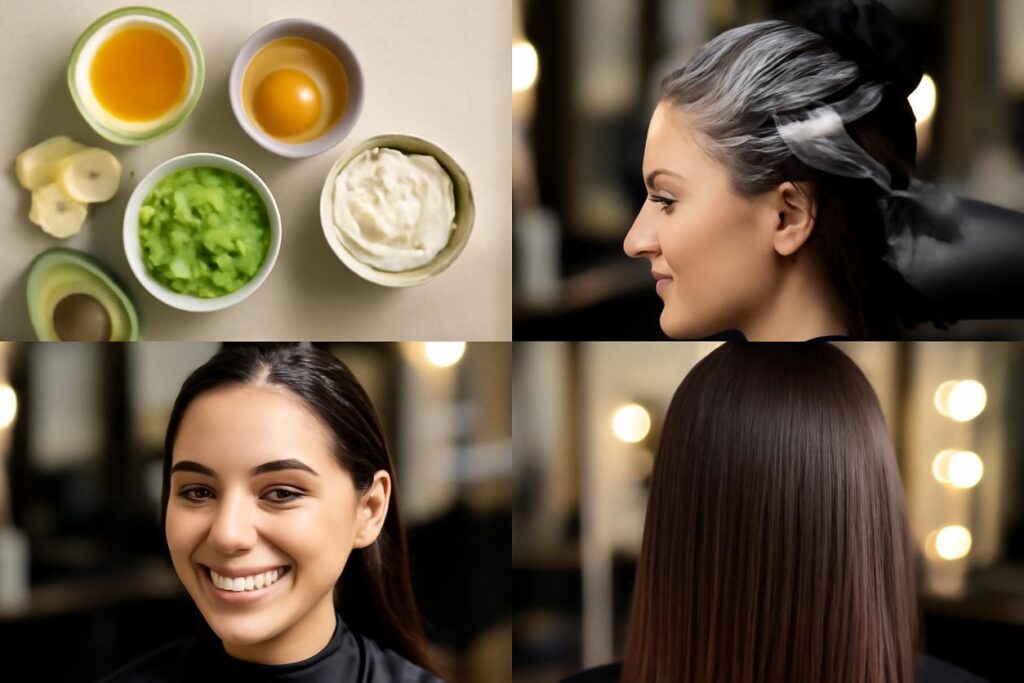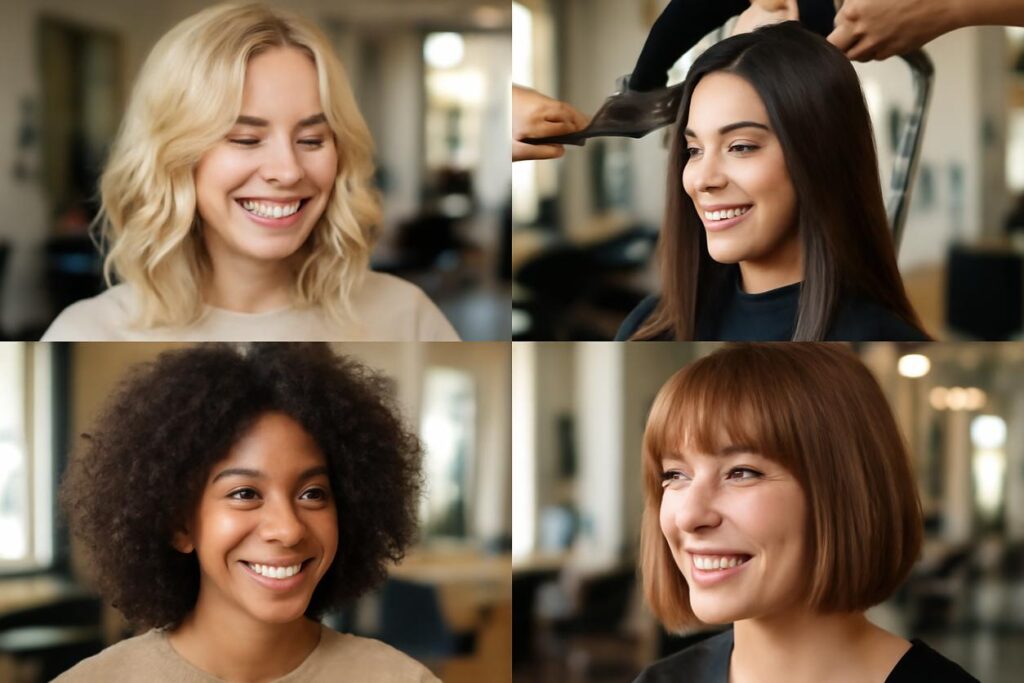Introduction — Why curls need a tailored plan
Welcome to the ultimate guide of curly hair tips designed for 2025 and beyond. If you have waves, curls, or coils, you know that your hair has a personality of its own. Unlike straight hair, curly hair requires a specialized approach, not just a list of products. The secret to unlocking your best curls isn’t a miracle cream; it’s a consistent, tailored routine that works with your hair’s unique structure, not against it. This guide takes a routine-first approach, helping you build a sustainable plan from the ground up.
We will move beyond generic advice and provide you with actionable, step-by-step strategies. Whether you’re just starting your curl journey or looking to refine your existing methods, these curly hair tips will empower you to understand your hair on a deeper level. We’ll explore everything from the science of a curl strand to crafting daily, weekly, and even travel-friendly routines that make curl care feel effortless and rewarding.
How curl structure affects care (science in simple terms)
To master your curls, it helps to understand why they behave the way they do. It all starts at the root. A curly hair strand grows from an oval-shaped follicle, while a straight hair strand grows from a round one. This oval shape causes the hair to curve as it emerges from the scalp, creating its signature bends and twists.
This beautiful structure also presents a few challenges. The natural oils produced by your scalp (sebum) have a harder time traveling down the winding path of a curly strand. This is a primary reason why curly hair is often drier than straight hair, especially at the ends. Furthermore, the points where your hair bends are weak spots in the hair’s protective outer layer, the cuticle. These raised cuticles can make the hair more prone to frizz, tangling, and moisture loss. Understanding this basic hair structure is the first step in providing the targeted care your curls crave.
Identify your curl pattern and porosity
Before you can build the perfect routine, you need to know your hair’s specific characteristics. The two most important factors are your curl pattern and porosity.
Curl Pattern: This refers to the shape and size of your curls. While many people have multiple patterns on their head, identifying your dominant type is a great starting point.
- Type 2 (Wavy): Hair forms an ‘S’ shape. It ranges from loose waves (2a) to more defined S-shapes (2c) that can be prone to frizz.
- Type 3 (Curly): Hair forms defined, springy corkscrews. It ranges from large, loose spirals (3a) to tight, pencil-sized curls (3c).
- Type 4 (Coily): Hair forms tight coils and zig-zag patterns. It ranges from dense, S-shaped coils (4a) to Z-shaped strands with less visible curl definition (4c). This type is the most fragile and prone to shrinkage.
Porosity: This is your hair’s ability to absorb and retain moisture. It’s arguably more important than your curl pattern for choosing the right techniques. You can test it easily:
- Take a clean, dry strand of hair and place it in a glass of water.
- Low Porosity: If the strand floats, your hair has low porosity. The cuticles are tightly packed, making it hard for moisture to get in.
- Medium Porosity: If the strand floats for a bit before slowly sinking, you have medium (or normal) porosity. This is often considered the ideal, as it absorbs and retains moisture well.
- High Porosity: If the strand sinks quickly, you have high porosity. The cuticles have gaps, so hair absorbs moisture easily but also loses it just as fast. This is often the result of damage.
Research shows that managing hydration based on porosity is key to hair health.
Daily care: morning and refresh routines
What you do between wash days is just as important as the wash day itself. The goal is to revive your curls without starting from scratch.
Gentle detangling
One of the most crucial curly hair tips is to never dry-comb or brush your curls. This disrupts the curl pattern and leads to breakage and frizz. Instead, always detangle when your hair is wet and saturated with conditioner. Use your fingers (finger combing) or a wide-tooth comb, starting from the ends and working your way up to the roots to gently remove knots.
Leave in and styling shortcuts
Your morning refresh should be quick and effective. You don’t need to re-soak your hair every day.
- Steam Refresh: Use the steam from your shower to gently rehydrate your curls.
- Spray Bottle Refresh: Mix water with a small amount of leave-in conditioner in a spray bottle. Lightly mist your hair to dampen it, focusing on areas that are frizzy or have lost definition.
- Glaze and Scrunch: After misting, take a small amount of gel or cream, rub it between your palms, and gently glaze it over the canopy of your hair. Then, scrunch upwards to encourage the curl pattern to reform. Let it air-dry or use a diffuser for a few minutes.
Washing and conditioning: timing and techniques
How often you wash your hair depends on your curl type, porosity, and lifestyle. Coily hair may only need washing once a week or even less, while fine, wavy hair might need it every 2-3 days. The key is to listen to your hair and scalp.
Co washing vs shampooing
The method you use to cleanse your hair is a cornerstone of any good curl care routine.
- Co-Washing: This means washing your hair only with a cleansing conditioner. It’s a very gentle method that cleanses without stripping natural oils. It’s ideal for very dry, coarse, or coily hair types (Type 3c-4c).
- Shampooing: Using a traditional (but sulfate-free) shampoo is necessary for those with fine waves, oily scalps, or who use products containing silicones. It provides a more thorough cleanse. A good strategy is to alternate between co-washing and using a gentle shampoo.
- Clarifying: Regardless of your method, it’s essential to use a clarifying shampoo once a month. This removes product buildup, hard water minerals, and impurities, giving your hair a “reset.”
Deep treatments and DIY masks with recipes
Deep conditioning is a non-negotiable step for healthy, hydrated curls. Aim to do a deep treatment at least once a week. These treatments provide an intense dose of moisture or protein to strengthen and nourish the hair shaft.
You can create effective masks with ingredients from your kitchen:
Intense Moisture Mask (for dry, brittle hair)
- Ingredients: 1 ripe avocado, 2 tablespoons of olive oil, 1 tablespoon of honey.
- Instructions: Mash the avocado until smooth. Mix in the olive oil and honey. Apply to clean, damp hair, focusing on the ends. Cover with a shower cap and leave on for 30 minutes before rinsing thoroughly.
Protein-Balancing Mask (for weak, mushy-feeling hair)
- Ingredients: 1/2 cup of plain yogurt, 1 egg.
- Instructions: Whisk the yogurt and egg together until well combined. Apply to clean, damp hair from root to tip. Cover and leave on for 20-30 minutes. Rinse with cool water to avoid scrambling the egg.
Styling for definition without crunch or frizz
The key to defined, frizz-free curls is applying styling products to soaking wet hair. This helps the products distribute evenly and allows your curls to clump together naturally as they dry.
Tools and techniques
- Raking: Use your fingers like a rake to distribute product through your hair from root to tip.
- Praying Hands: Place a section of hair between your palms (as if praying) and smooth the product down the hair shaft. This helps seal the cuticle and reduce frizz.
- Scrunching: Gently cup sections of your hair and squeeze upwards towards the scalp. This encourages curl formation. Use a microfiber towel or an old t-shirt to scrunch out excess water.
- Plopping: After applying products, lay a microfiber towel or t-shirt on a flat surface. Flip your hair forward onto the towel, then wrap it up. This technique helps curls set without being weighed down by gravity.
- Diffusing: Use a diffuser attachment on your blow dryer on low speed and low-to-medium heat. This dries your curls gently, enhancing volume and definition.
Night routines and travel friendly tips
Protecting your curls overnight is essential for maintaining your style for multiple days. Friction from cotton pillowcases can cause frizz and disrupt your curl pattern.
- The Pineapple: Loosely gather your hair into a high ponytail on top of your head. This protects the curls from being crushed while you sleep.
- Satin or Silk: Sleep on a satin or silk pillowcase to reduce friction. Alternatively, wear a satin bonnet or scarf to protect your hair.
Travel-Friendly Tips:
- Decant your favorite products into travel-sized reusable containers.
- Consider solid shampoo and conditioner bars to save space and avoid liquid restrictions.
- Pack a silk scarf—it can be used for sleeping, protecting hair from the sun, or as a stylish accessory.
Nutrition and supplements that support healthy hair
Healthy hair starts from within. A balanced diet rich in vitamins and minerals is crucial for strong hair growth. Focus on incorporating these nutrients:
- Protein: Hair is made of protein (keratin), so ensure you’re eating enough from sources like eggs, lean meats, fish, and legumes.
- Iron: Iron deficiency can lead to hair loss. Find it in spinach, red meat, and lentils.
- Biotin: This B vitamin is well-known for its role in hair health. It’s found in nuts, eggs, and whole grains.
- Omega-3 Fatty Acids: These healthy fats support a healthy scalp. Sources include salmon, avocados, and walnuts.
- Vitamins C and E: These antioxidants protect hair follicles from damage. Find them in citrus fruits, berries, and leafy greens.
While supplements can be helpful, it is always best to consult with a healthcare professional before starting any new regimen to ensure it is appropriate for your individual needs.
Product selection checklist and ingredient primer
Navigating the world of curly hair products can be overwhelming. Here’s a simple checklist of what to look for and what to avoid.
Ingredients to Look For (The Good Stuff):
- Humectants: Glycerin, honey, aloe vera (attract moisture).
- Emollients: Shea butter, mango butter, olive oil, avocado oil (seal in moisture).
- Proteins: Hydrolyzed wheat protein, keratin, silk amino acids (strengthen the hair shaft).
- Fatty Alcohols: Cetyl, stearyl, and cetearyl alcohol (moisturizing, not drying).
Ingredients to Avoid (The Bad Stuff):
- Sulfates: Sodium lauryl sulfate, sodium laureth sulfate (harsh detergents that strip natural oils).
- Drying Alcohols: Alcohol denat, ethanol, isopropyl alcohol (can dry out hair).
- Non-Water-Soluble Silicones: Dimethicone (can cause buildup without proper cleansing).
Troubleshooting common concerns with quick fixes
Even with a great routine, you might face some challenges. Here’s how to tackle them.
| Problem | Quick Fix |
|---|---|
| Excessive Frizz | Your hair might need more moisture. Try adding a leave-in conditioner under your styling gel or cream. On refresh days, use a bit of water and a smoothing product with the “praying hands” technique. |
| Flat Roots | While your hair is drying, use small clips at the roots to lift them up. Diffusing with your head flipped upside down also creates volume. |
| Product Buildup | If your curls feel limp, greasy, or weighed down, it’s time for a clarifying wash. Use a sulfate-free clarifying shampoo to reset your hair and scalp. |
| “Crunchy” Curls | This is a “cast” from your gel, which is actually a good thing! Once your hair is 100% dry, gently “scrunch out the crunch” with your hands to reveal soft, defined curls. You can use a drop of a lightweight oil on your hands to help. |
Three complete routine templates by curl type
Here are sample weekly plans to use as a starting point. Adjust them based on your hair’s needs.
Type 2 (Wavy) Routine
- Wash Day (2-3 times/week): Cleanse with a sulfate-free shampoo. Condition, detangling from the ends up. Apply a lightweight mousse or curl cream to very wet hair using the raking method. Plop for 15 minutes, then air-dry or diffuse for volume.
- Refresh Days: Mist lightly with water. Scrunch to revive waves. Avoid heavy products that can weigh down your hair.
- Deep Condition: Once every 1-2 weeks with a lightweight hydrating mask.
Type 3 (Curly) Routine
- Wash Day (1-2 times/week): Co-wash or use a moisturizing shampoo. Condition generously and detangle. Apply a leave-in conditioner followed by a gel using the “praying hands” method. Scrunch thoroughly with a microfiber towel. Diffuse or air-dry.
- Refresh Days: Mist hair with a water/leave-in mix. Glaze over a small amount of gel on frizzy sections and scrunch.
- Deep Condition: Weekly. Alternate between moisture and protein treatments based on your hair’s needs.
Type 4 (Coily) Routine
- Wash Day (once every 7-10 days): Pre-treat with oil (pre-poo) to prevent stripping. Cleanse with a co-wash or moisturizing shampoo. Deep condition with heat (a thermal cap or steamer) for 30 minutes. Apply products in sections to ensure full coverage, using a cream for moisture and a gel for hold (L.C.G. or L.O.C. method). Style with twists or braids to set the pattern.
- Refresh Days: Refreshing may not be needed daily. If necessary, use steam or a light mist. Focus on sealing ends with oil or butter.
- Deep Condition: Every wash day without fail.
Myth busting and science backed explanations
- Myth: You should never brush curly hair.
- Truth: You should never brush dry curly hair. Brushing or combing wet, conditioned hair is the best way to detangle without causing breakage or disrupting your curl pattern.
- Myth: Oils moisturize your hair.
- Truth: Oils are sealants, not moisturizers. Water is the ultimate moisturizer. You should apply oils or butters *after* water-based products (like leave-in conditioners) to lock that moisture in.
- Myth: Cutting curly hair is the same as cutting straight hair.
- Truth: Curls are best cut dry, curl by curl. This allows the stylist to see how each curl naturally falls and create a shape that accounts for shrinkage and pattern variations.
Resources and references for further learning
Your curly hair journey is a continuous process of learning and discovery. The most important of all curly hair tips is to be patient with yourself and your hair. For more in-depth guidance and visual tutorials, exploring dedicated resources can be incredibly helpful.






